Whether it’s hearing a dog bark incessantly or seeing a dog tied up or left outdoors 24/7, it can be infuriating. It addresses the dog’s welfare and potential risk to the neighborhood’s tranquility.
Knowing why these situations happen and what to do is key to making the right decision. Noise concern and safety for the neighbor dog are our main priorities.
With the right approach, you can strike a balance that works for all parties.
- Dogs left to roam outside all day face significant hazards, as well. They’re exposed to extreme weather, can die from heatstroke or hypothermia, and suffer emotional trauma from being left alone. Providing proper care is the key to their healthy, happy lives.
- Because outdoor dogs face boredom and isolation, they may develop behavioral issues. Barking, digging, or aggression issues soon develop as a reaction. These problems are harmful not only to the dog’s mental well-being, but to the tranquility of the entire neighborhood.
- Those who neglect outdoor dogs may face criminal charges. Most municipal animal care and control ordinances require that pets be provided with adequate shelter, nutrition, hydration, and veterinary care. In cases of extreme neglect, fines or criminal charges should be pursued.
- Signs of neglect – such as malnutrition, dehydration, or unsafe living conditions. These five indicators will help you recognize when a dog is in distress and needs your action. These signs should be meticulously documented in order to bolster any future complaint.
- Approaching your neighbor’s concerns in a calm and polite manner can get you much further in establishing productive dialogue. Focus on the dog’s welfare first and then suggest real, workable solutions such as providing adequate shelter and increasing access to veterinary care. Be as cordial as possible and avoid seeming accusatory.
- When neglect is constant, reporting your neighbor to local animal control or humane officers with documented clear evidence is key. This way, appropriate steps can be taken to address the dog’s welfare.
Why It Matters for Dogs Outside
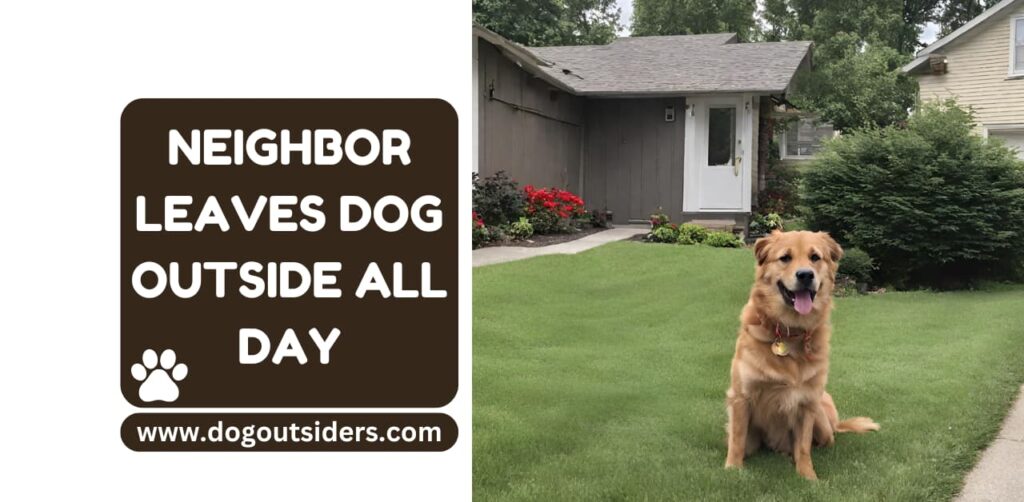
Recognizing the Importance of Proper Shelter
Dogs are dependent on us for shelter from the elements. Without it, they’re forced to endure the sweltering heat of summer or bitter cold of winter outside. In states with such laws, like Texas, for example, dogs kept outdoors in searing temperatures need access to “adequate shelter” to avoid suffering from heatstroke.
That translates into shaded spaces that provide relief from direct sun exposure and ready access to clean drinking water. In places with harsher winters, like Minnesota, dogs left outside for long periods risk hypothermia, especially during freezing temperatures.
Sadly, many people are under the impression that a dog’s coat alone can insulate them through extreme temperatures. Although fur can be very protective, it does not protect them from the long-term effects of extreme conditions.
Understanding Health Risks of Being Left Outside
Putting dogs outside all day, every day, can result in catastrophic health issues. Long-term exposure to cold weather can lead to frostbite or hypothermia, a condition in which a dog’s body temperature falls to a critical level.
Even in Florida, it’s a misdemeanor to leave dogs outdoors in subfreezing temperatures. Extreme heat poses dangers such as dehydration and heatstroke, which can be deadly.
There are health concerns, such as exposure to diseases spread by wildlife, like rabies or parasites, when dogs are left to roam unsupervised. For instance, wild animals or vermin are more likely to have direct interaction with dogs outside, making transmission more likely.
Acknowledging Emotional Needs
Dogs are social, intelligent, and emotional creatures. Leaving them outside by themselves for hours or all day long prevents them from getting this essential imperative.
In the long run, this kind of isolation can contribute to anxiety, depression, or other behavioral issues. For example, excessive barking due to long-term isolation can lead to noise ordinance violations.
Chronic barking is often not considered illegal, even during the day. It can become a real bother, particularly after nighttime noise limits go into effect. Sometimes, if several adjacent households file reports, local Animal Control will step in.
Considering Long-Term Neglect Effects
Failure to meet a dog’s basic needs can lead to lasting effects. Behavioral issues like aggression or fearfulness frequently arise in dogs who spend too much time outdoors.
For instance, lack of stimulation from chronic isolation can cause boredom-induced behaviors such as digging or chewing. Dogs that have been denied regular socialization can have issues being around other humans or animals.
This lack of interaction might make dogs more anxious. It can cause them to feel untrustworthy in novel environments, which further harms their overall well-being.
Animal Welfare Concerns for Outdoor Dogs
Identifying Signs of Neglect
There may be no food or water, or no safe shelter. Dogs who are left outside without these essentials are at a much greater risk of unnecessary suffering.
In states such as California and Florida, animal cruelty laws make it a felony to neglect an animal to death. This classification emphasizes how serious these actions are.
That’s why one in five dogs experiences some type of abuse or neglect in their lifetime. The most commonly reported cases are when dogs are left out in extreme weather.
Legal Implications
Unfortunately, neglecting dogs outside can be legal in most states. Pennsylvania felony cruelty provisions make it a felony to cause serious bodily injury or death due to neglect.
These laws do more than just protect the animals; they ensure that owners are held accountable for providing at least the bare minimum of care. Whether you’re a dog owner, a caretaker, or a potential adoptions counselor, knowing these legal obligations is key.
Risks from Injury or Hazards
Outdoor dogs are highly vulnerable to attacks by other animals, such as stray dogs or even predators, as well as unforeseen environmental dangers.
For instance, unfenced swimming pools or other dangers in the yard can lead to accidents. Without supervision, these hazards become exponentially worse, endangering the dog’s health and safety.
Psychological Effects of Isolation
Dogs that are left outside for long periods of time may become deeply disturbed. Anxiety, fear, and even depression can set in from perpetual confinement.
Eventually, these emotional battles may spill over into aggressive or destructive behaviors, making the dog’s care even more challenging.
Risks of Leaving Dogs Outside All Day
Extreme Weather Conditions
Weather extremes are among the greatest dangers to dogs who live outside. Just like a heatwave can lead to dehydration or heatstroke, so too can freezing temperatures lead to frostbite or hypothermia.
In states such as Florida, knowingly leaving a dog outside when dangerous weather is imminent is now a third-degree felony.
Theft or Harm
Dogs left unattended outside are at greater risk of being stolen or harmed by a passerby. Thousands of dogs are killed every year due to this hidden hazard.
It’s a danger that’s very much a reality, especially in cities, where animals easily become collateral damage.
Disease Exposure
Outdoor dogs are more likely to contract diseases from wildlife or stray animals. Rabies, for instance, can only be transmitted through bites, but ticks and fleas can introduce other dangerous parasites.
Accidents or Injuries
When dogs are left unsupervised outdoors, it raises the chances of accidents and injury. A fence fighting dog or a dog hit while chasing a passing car are two typical examples.
All of these scenarios can lead to catastrophic injury or death, so monitoring dogs is critical.
Potential Behavioral Issues from Isolation
Behavioral Changes
The dogs that remain outside full-time typically suffer from profound behavioral shifts. Increased aggression or fearfulness are typical effects of long-term confinement.
For example, a dog that is scared of being left alone might react with extreme fear or aggression if someone moves to approach.
Boredom-Related Behaviors
Boredom is a common canine concern and can result in negative behaviors such as destructive barking, digging, or chewing.
These behaviors are usually a dog’s attempt to deal with separation anxiety and boredom.
Separation Anxiety
Isolation is another cause of separation anxiety. Dogs with this condition can have a hard time being left alone, even for a few minutes.
To cope, they might show their stress by pacing or whining.
Lack of Socialization
Socialization is one of the most important aspects of a dog’s development. Dogs love constant companionship.
Without it, they will find it difficult to cope in novel environments or with unfamiliar people, and this can result in fear or aggression.
Even worse, a lack of socialization can prevent them from developing positive and healthy relationships with people and animals.
Is It Illegal to Leave Dogs Outside?
Understanding Local Animal Welfare Laws
Whether it is illegal to leave your dog outside depends heavily on where you live. So, it’s very important to know what the exact rules are where you live. Several cities and states have passed breed-neutral ordinances that specifically prohibit the mistreatment and neglect of pets kept outdoors.
In the U.S., it’s illegal to leave dogs outside if they can’t get shelter, food, and water, and in some areas, guards are required 24/7. This is doubly important during periods of severe weather. In England and Wales, statutory guidance emphasizes the need to provide dogs with an outdoor space that facilitates their wellbeing. Dogs deserve to be protected from exposure to cold, heat, and other environmental dangers to ensure their safety and wellbeing.
Pet owners have legal obligations, too, to keep their dogs safe and healthy. This involves ensuring they receive adequate veterinary care and keeping them securely housed in a safe environment. Local authorities, including animal control departments, are largely responsible for enforcing these regulations.
Beyond law enforcement, they’re able to respond to calls about suspected neglect, perform welfare checks, and promote education in their communities on responsible pet ownership. Community awareness is the key. When neighbors know these laws, they can help keep animals safe and healthy by reporting any instances of neglect to local authorities.
Legal Consequences of Neglecting Pets
Neglecting the needs of dogs left outside could be considered felony animal cruelty. In each and every state, animal neglect is a misdemeanor crime of its own. In the most extreme situations it can lead to felony charges.
States—California, Connecticut, and Florida—felony penalties only apply if an animal is killed. These laws are important because they punish offenders for their negligence and cruelty. In Georgia, cruelty with malice aforethought is a felony. Even Massachusetts and Oklahoma have laws that impose felony penalties for animal neglect, no matter the particulars of the situation.
In some jurisdictions the penalties for extreme neglect or abuse can include significant fines, jail time, or both. In extreme cases, dog guardians can be banned from owning pets again. Reporting neglect should be an easy step to take. Call or email your local animal control agency or the county sheriff’s office to register your complaint.
Make sure to attach any supporting evidence, such as photos or videos that clearly document the violation, to support your complaint. When a report is made, officials will look into it, and if neglect is found, criminal charges can ensue. Long-term ramifications for convicted pet owners may consist of criminal records that adversely affect ensuing job or housing options.
Exceptions and Gray Areas in Regulations
Animal welfare laws, even when they exist, often include exceptions for extreme circumstances, making it difficult to define neglect. In many areas, it’s acceptable for dogs to be left outside as long as they have adequate shelter. They have to have access to food, water and other basics.
However, how much is “enough” is subjective and varies by the owner. A well-insulated doghouse may fulfill that in a temperate climate, yet be inadequate with the dog left outside during sub-zero temperatures. Statistics show that 80% of dogs left outdoors in extreme cold develop hypothermia or frostbite. This truly shocking number makes a strong case for the need to consider context when judging cases of neglect.
Gray areas exist because it’s not obvious in every case. A dog left outside in temperate weather with adequate shelter and water might technically be considered cared for under the law. Leaving a dog out in extreme heat or cold is life-threatening and illegal.
Misunderstandings may occur when individuals do not account for the special needs of some breeds. Further, they might downplay the risks of long-term exposure to extreme environments. A winter-hardy dog such as a husky will be able to tolerate much colder temperatures than a short-haired breed.
When weather becomes life-threatening, every dog deserves protection. Understanding these nuances helps develop a thoughtful and fair approach to detecting, defining, and addressing neglect.
Identifying Signs of Neglect or Abuse
Physical Indicators of Neglect in Dogs
If a dog will be left outside all day, particularly in inclement weather such as rain, snow, or extreme heat, it’s crucial to ensure the dog’s safety. Be vigilant for physical signs that suggest animal abuse or neglect. One of the most obvious signs is malnutrition, which can lead to serious health issues for your precious pets.
Signs of neglect or abuse include a dog that has lost a lot of weight, visible ribs, or a very thin body frame. This could indicate underfeeding, potentially due to a lack of feeding or poor-quality dog food. Dehydration is another major indicator; lethargic dogs with dry, tacky gums often have no access to fresh water, which is especially alarming for animals confined outside during extreme heat or cold.
Dehydration is a major indicator. Lethargic dogs with dry, tacky gums and little energy frequently have no access to fresh water. Make sure they have access to lots of clean water at all times too! This is particularly alarming for animals confined outside, because animals’ thirst needs are amplified in extreme heat or cold.
Additionally, keep an eye out for any signs of injuries or untreated wounds, which may reflect a history of neglect and lack of veterinary care. Regular veterinary check-ups and vaccinations are crucial for a dog’s well-being, and lack of access can severely worsen health issues, making it essential to involve local animal control officers if necessary.
In cases where you suspect animal control agencies are needed, it’s vital to act swiftly. Reporting signs of neglect can help ensure that these dogs receive the care they need and deserve, allowing them to thrive as healthy companions in loving homes.
Behavioral Signs of Distress in Dogs
A dog’s behavior is the best indicator for things even good vetting can’t always catch. Many of the problem behaviors, like excessive barking, are indications of anxiety or distress. This is pervasively true if they are unsupervised for extended hours.
Likewise, pacing, whining, or destructive behaviors like chewing or digging can indicate anxiety or fear. Other dogs may shut down entirely. Fearfulness towards humans or a lack of socialization with other animals can result from extended isolation from humans or other companion animals.
Aggressive behaviors like growling or snapping may arise in a further reaction to a negative space. Compulsive behaviors, such as excessive licking or tail-chasing, usually develop as a response to stress from neglect or abuse.
These behaviors are a manifestation of the emotional burden from lack of care as well as a lack of a loving home.
Environmental Conditions to Look For
The dog’s living conditions are very telling about its overall well-being and treatment. Ability to maintain adequate shelter is crucial. A safe, dry, well-ventilated shelter is necessary for all dogs kept outdoors.
It must protect them from moisture, inclement weather, harsh climates, and environmental factors. Shelters that are badly built or even absent altogether leave dogs exposed to these dangerous conditions, putting their health in jeopardy.
It’s also important to consider the cleanliness of the entire area. The presence of litter, garbage, debris, or dangerous objects can lead to the spread of infections and/or injury.
A dog left in a small, cramped space without regular cleaning might face serious health challenges, including respiratory issues or skin infections. The right to access fresh water and a stable, healthy food supply is fundamental.
Dogs should have access to clean water at all times and should be provided with additional water during hot weather or when exercising. A well-rounded and nutritious diet ensures their well-being and long-term development.
Failure to provide basic necessities such as food and water can lead to malnutrition or dehydration, dangerous conditions with dire outcomes. Finally, think about environmental safety.
Are there risks from outside traffic, another aggressive dog, unsafe fencing that may injure the dog, etc.? A dog that is abused or neglected is frequently left in a situation where it is further subject to avoidable harm, underscoring the need for action.
Documentation and Reporting
If you’re seeing any of these signs, documenting them becomes extremely important. Take detailed, dated notes of your observations, including times and descriptions of the dog’s condition or environment.
Photos or video can offer corroboration. This information is critical if you choose to report the conditions to your local animal control agencies or police. If you have no idea where to even begin, calling 9-1-1 should help route you to the best resources available.
Steps to Address the Issue Respectfully
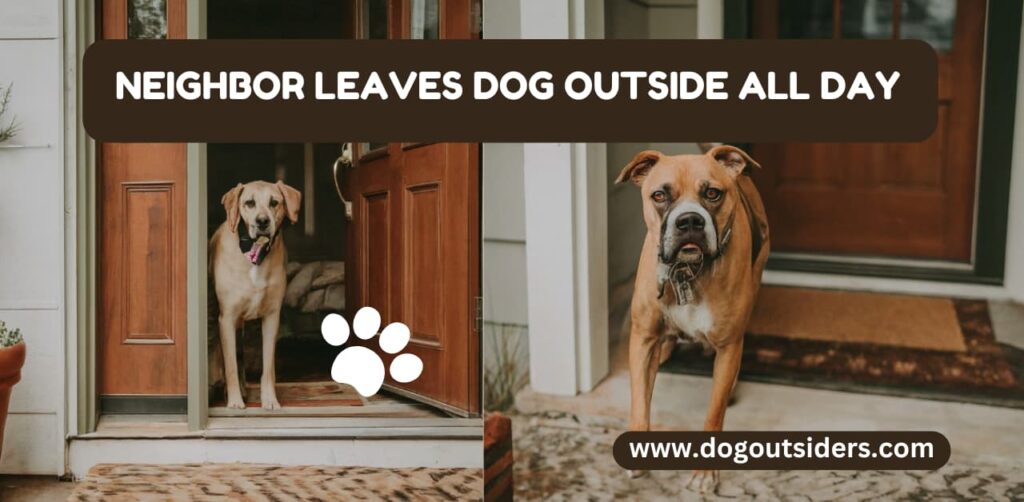
1. Reflect on the Situation Objectively
Before we all panic and throw up our hands, it’s time to take a deep breath and look at the big picture regarding the welfare of our precious pets. I start by monitoring the dog’s situation for at least three or four days, paying attention to behavior changes, physical symptoms, and audible signs of stress. For example, does the dog appear extremely anxious or depressed? Is it left outside without adequate cover, or does it look shabby? It’s those details that give me the full picture of potential animal abuse.
It’s so easy for assumptions to run wild, particularly if I start hearing my other neighbors talking trash about it. I have found it a valuable practice to not take my opinion based on hearsay. Rather, I ground my suggestions in what I can find in my own classroom spaces and experiences.
If I’m home and able to hear the dog barking all day long, I try to remember when this occurs. Next, I note the frequency with which it happens. Putting these observations in writing gives you a documented, objective record to speak to down the road, which can be crucial when discussing concerns with local animal control officers.
I make an effort to consider what’s going on that might explain the neighbor’s actions. Perhaps they work multiple jobs or are just not informed on how their animal’s environment can be improved. Hearing from many sides allows me to come to the issue with a clearer head, rather than an overzealous and pre-cooked judgment.
2. Approach Your Neighbor Calmly
Timing is everything when opening a conversation about a sensitive and complicated issue like this one. I’ve discovered that weekends work best because people are more laid back and willing to engage. To avoid an adversarial exchange that leaves me feeling frustrated and unheard, when I do raise my concerns, I wait until my neighbor is not busy with other things.
This goes a long way in helping to set the stage for a really productive and respectful chat. Just using a respectful tone, a really calm, polite tone, goes a long way. I don’t shame people for leaving their dog behind; I show them that I genuinely care about their dog!
For example, I might start with something like, “I see your dog’s outside a lot. Is something wrong now? I’m not trying to intimidate you, I just want to make sure you’re ready for some serious discomfort.” Complementing the inquiry with these questions, we recommend using a strengths-based approach to compliment the inquiry.
I work very hard to listen. Sometimes, neighbors share challenges I hadn’t considered, like financial difficulties or personal struggles. I make room for empathy, listen, and validate their perspective. This results in an environment where we can work together rather than at odds.
3. Avoid Making Unsupported Claims
When I raise issues, I only raise what I’ve personally seen. I’ve seen your pooch left out in these bitter temperatures. You’d be doing him a favor to get him indoors. Concrete examples such as this one help keep this conversation positive and productive.
Avoiding hyperbole is another big one. Statements such as “you’re abusing your pet” sound accusatory and may be interpreted that way, which usually results in defensiveness and escalated discussions. Instead, I focus on the dog’s needs, which helps the conversation stay focused on solutions instead of assigning blame.
4. Suggest Solutions for the Dog’s Well-being
Providing thoughtful ideas lets my neighbor know that I’m not simply raising an issue but really want to work with them to explore ways to improve. For instance, I might advise you to add a doghouse or more bedding in winter. If they seem unsure how to proceed, I suggest local resources, like shelters or pet care services, that could offer affordable options.
In many instances, their neighbors are willing to engage in a more collaborative process. Arranging meetings with other dog owners increases collaboration. These meetings establish a code of conduct for shared animal care that keeps all community members on the same page.
This fosters emergent community support systems, where solutions can be shared, like having neighbors rotate care for outdoor pets during extreme weather.
Documenting and Reporting Concerns
To address issues like a neighbor who leaves their dog out all day, begin by having detailed and well-ordered records. Taking this first step will ensure you are better equipped to tackle the concern. It will be the basis of your accusations. Collecting strong evidence will only strengthen your case.
It makes sure that the dog’s health and welfare is always a primary consideration. This process requires careful observation, documentation, and the ability to report your findings in a compelling manner.
Importance of Gathering Evidence
Evidence is key in cases of alleged animal abuse. Without it, local animal control officers don’t have the power nor the knowledge to take action. By providing documentation and a clear narrative, you can paint an excellent picture of the conditions you’re facing with your neighbor’s pet.
If the dog appears to be in pain, such as abnormal barking or obvious lethargy and weight loss, take note. Be specific. Be sure to document dates and times when these behaviors occur. If you’ve had a discussion with your neighbor regarding their dog, detail those discussions. Record what was promised and the dates of those conversations.
Comprehensive documentation provides law enforcement with the context they need to grasp the severity of the situation. In Florida, you can’t leave a dog out during a freeze; it’s not just dangerous, it’s illegal when a severe weather alert is in effect. Understanding local laws is key to addressing concerns about precious pets.
For instance, in Texas, as long as a dog has sufficient shelter, he can be left outdoors in blistering heat. By knowing the rules in your area, you can make a more informed decision about whether to pursue the issue further, ensuring the protection of both pets and neighbors alike.
How to Document the Dog’s Living Conditions
Step 1: Develop a catalogue of essential requirements. Provide for the dog’s basic needs—make sure they have food, clean water, and proper shelter. Whether you’re leaving the dog in a car or outside in extreme temperatures, make sure they have shelter from the weather.
Seek out shaded area or cool insulated building. Photos, video and other documentation can be key evidence. An image of an empty water bowl on a scorching day speaks volumes. Likewise, an hour-long video of a dog barking incessantly due to distress conveys the seriousness of the issue.
Developments in the dog’s condition over time are just as critical. If its fur looks tangled, or if its behavior changes from lively to introverted, make a note of these symptoms in a journal. Conversations with the neighbor regarding the dog’s care should be noted.
If they brush aside your concerns or fail to follow through, this background can provide helpful context. It may be key if enforcement action from authorities becomes necessary.
When and How to Contact Authorities
If you’ve collected enough evidence and feel the dog is being neglected, determine the correct local authority. This could be a local animal control, sheriff’s department, or humane society. Know the process for filing a complaint, including what documentation is required.
Usually, authorities will ask for details, including the dates of noted abuse and your documentation, such as videos or tracking logs. Know how long to expect before you hear back. Authorities need time to investigate, especially if they’re working on a dozen or more cases.
Taking the time to follow up is a great way to ensure your concerns are heard and considered. Keep in mind that documenting the scene helps ensure the animal’s welfare, which should always be our top goal.
What to Do About Barking Dogs
Understanding Why Dogs Bark Excessively
Dogs bark for all sorts of reasons, and nuisance barking usually has an underlying cause that’s worth investigating. Loneliness and separation anxiety are common causes of constant barking. This behavior mostly occurs when a dog is left outdoors unattended for extended hours.
This is especially the case in dogs that have a hard time being alone or are lonely from being separated from their family. Fear or environmental stimuli, like barking at the sounds of passing traffic or noisy construction work, may set off barking episodes.
First, it’s important to identify alert barking. Dogs bark at the last moment to warn you of impending harm. Nuisance barking is more frequent and less purposeful. Certain breeds are instinctively more prone to bark than others.
For instance, breeds that were historically used as herding or guard dogs (such as Border Collies or German Shepherds) have an innate predisposition to vocalize. Understanding these leanings is the first step toward getting to the heart of the issue.
Environmental triggers are the other thing to keep in mind. Do you have a close-by park with amplified concerts or something similar that might be barking the dog? Does the dog have a safe, humane enclosure against excessive heat or cold?
It requires outside shielding from the sweltering heat of a Texas summer, and the biting cold of a Florida winter. These situations might add stress, leading to more barking.
Strategies to Address Barking Issues
There are many practical solutions to stop dogs from barking excessively, first with positive reinforcement training methods. Reward-based positive reinforcement methods, which reward dogs for good behavior, can help dogs learn to stop barking for no reason.
For instance, giving a dog a treat when it doesn’t bark will teach it to be quiet in the long run. Long walks and outdoor playtime are just as essential. Most dogs will bark if they’re bored or have too much energy.
Creating an environment that reduces anxiety is another effective tactic. If barking dogs or other outside noise sources are an issue, using white noise machines or soothing music can block disruptive sounds, making it easier for both pets and families to relax.
In more chronic situations, enlisting the help of local animal control officers or a certified dog trainer can help you develop personalized strategies to minimize excessive barking. For those seeking technological solutions, ultrasonic bark control devices, like the Dog Silencer MAX, can detect barking up to 300 feet and emit sounds only dogs hear, providing an effective way to discourage the behavior.
Overall, addressing excessive barking is crucial for maintaining a harmonious relationship between dogs and their families. By combining positive reinforcement, mental stimulation, and environmental adjustments, you can create a peaceful atmosphere for everyone involved, ensuring that your precious pets remain happy companions.
Communicating Barking Concerns Effectively
When approaching the situation with a neighbor, it’s important to begin with a patient and friendly demeanor. Your neighbor may not know that their dog’s barking is bothering you at all, particularly if the neighbor is at work during the day.
Providing examples of how the barking is interfering with your quality of life will help put a human face to the problem. If you complain, be specific—for instance, explain how the barking is impacting your WFH video conference calls or your kid’s sleep schedule.
Stop the finger pointing and start the teamwork. Propose potential solutions, like scheduling regular walks for the dog or researching training programs together. Open communication will help clarify your intent and keep you from stepping on any toes.
If the problem really doesn’t go away, at least having had an initial, courteous discussion helps to keep lines of communication open. It’s important to mention that as bad as constant barking can be, it is almost never illegal if it only occurs during the day.
Involving the authorities should be a last resort, as this can poison any future relationships with your neighbors.
Conclusion
Responsible stewardship of dogs extends past just making sure they’re fed and watered. Leaving a dog outside all day can create issues related to safety, comfort, and proper care. To truly address this issue requires both awareness and a willingness to act decisively. Human cruelty Begin by taking stock of the situation and collecting the facts. Usually, a polite discussion with the neighbor goes a long way in getting them to make things right.
If the issue persists or appears more serious, keeping a record and filing a complaint ensures appropriate action is taken. What’s most important is to make sure that you do what’s best for the dog, and do it in a way that respects all parties. Each contribution goes a long way to help the animals that are counting on us. If you’re not sure, but you do suspect neglect, don’t wait to be pleasant, be responsible. Dogs rely on us to stand up for them when they’re unable to do so themselves.
FAQ’s:
Rules differ by state and municipality. In many communities, leaving a dog outside all day without adequate shelter, water, or care is considered animal abuse and may even violate local animal control agencies’ laws.
Signs of neglect, such as a pet having no food, water, or shelter, or being left outside dogs in extreme weather for an extended period, raise serious concern. If your dog appears agitated or depressed, this is a red flag indicating potential animal abuse.
Approach your neighbor with compassion and understanding regarding their barking dog. If the situation persists, consider reporting it to local animal control agencies or filing a noise complaint with law enforcement.
Yes, you should always report suspected animal abuse or neglect to local animal control officers or the humane shelter.
Avoid being rude, aggressive, or confrontational when discussing animal abuse concerns. Share your thoughts without anger and provide helpful advice.
Adequate shelter for dogs means a structure that is appropriate for the dog’s size, offering protection from wind, rain, and extreme temperatures.
When left outside for extended periods of time, dogs are at risk for dehydration, hypothermia, heatstroke, or severe loneliness. The concern for their well-being is heightened during cold weather, as long-term exposure can take a serious toll on their health.

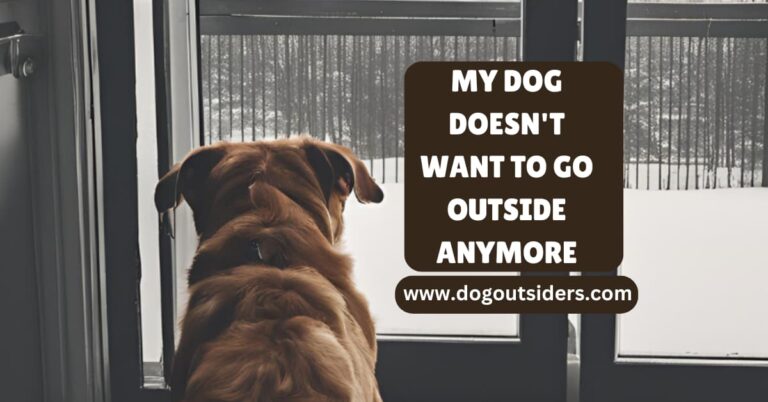

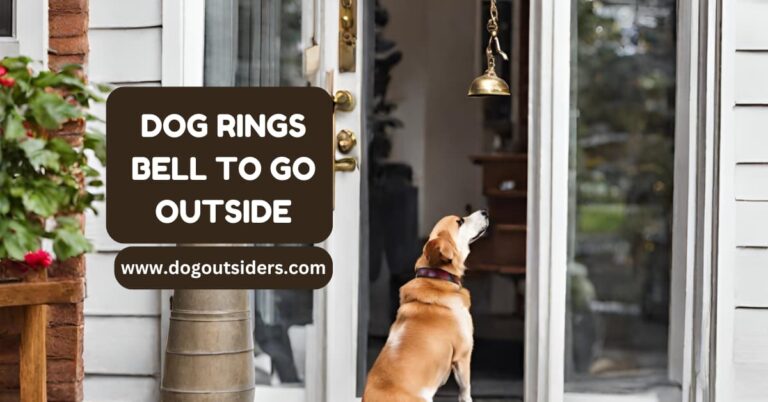

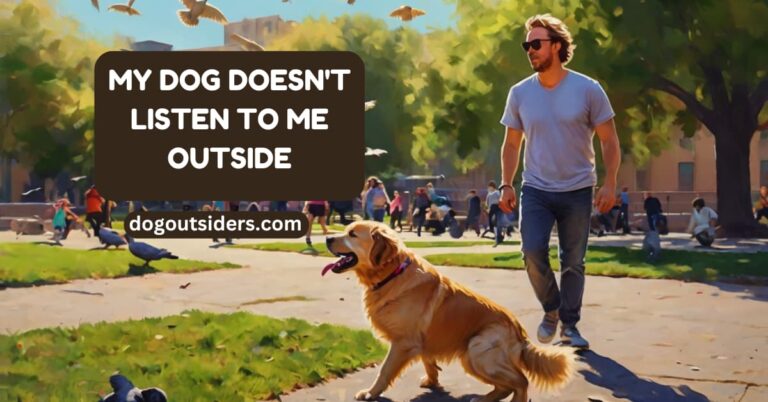
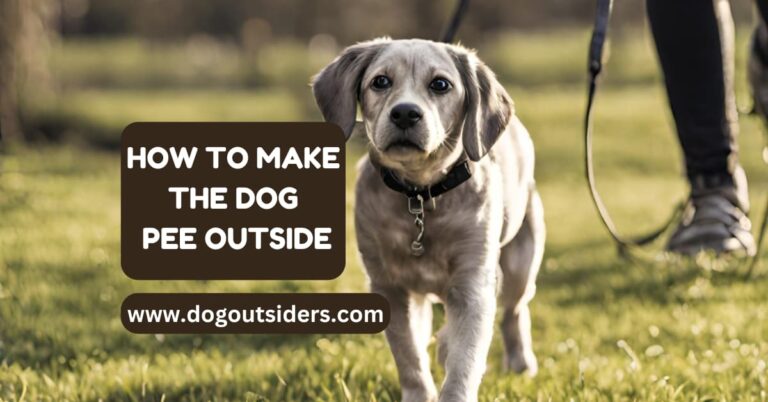
2 Comments